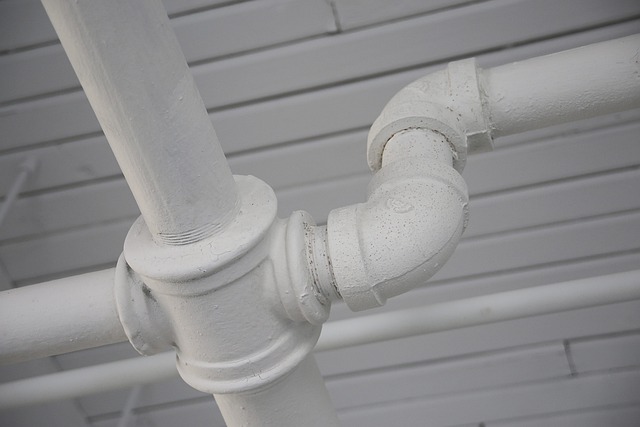DIY pipe insulation is an affordable and energy-saving approach for homeowners facing extreme temperature swings. By insulating pipes, you protect against freezing during winter, maintain optimal water temperatures, and reduce heating bills by slowing heat transfer. Essential tools and materials include fiberglass or foam insulation, insulation tape, a utility knife, heat-shrink tubing, gloves, and eye protection. This guide provides a straightforward process for DIY pipe insulation, from measuring to securing and sealing insulation around pipes, offering both energy efficiency and pipe protection.
“Looking to tackle a cost-effective and efficient home improvement project? DIY pipe insulation is an excellent solution for both energy savings and preventing frozen pipes. This step-by-step guide equips you with all the knowledge needed to insulate pipes like a pro.
From understanding the importance of insulation to gathering the right materials, you’ll discover simple yet effective techniques. By following these instructions, you can effectively regulate temperature, reduce energy bills, and protect your plumbing system – all from the comfort of your own home.”
- Understanding Pipe Insulation: Why and When to Insulate
- Gathering the Right Materials and Tools for DIY Pipe Insulation
- Step-by-Step Guide: Installing Pipe Insulation Like a Pro
Understanding Pipe Insulation: Why and When to Insulate

Insulating pipes is a crucial step in maintaining an energy-efficient home, especially in regions with extreme temperature fluctuations. DIY pipe insulation isn’t just about saving on utility bills; it’s also a proactive measure to prevent freezing pipes during winter, which can cause costly damage. By wrapping your pipes with insulation, you create a protective barrier that regulates temperature, ensuring water remains at the desired level without stressing your plumbing system.
This is particularly important for exposed pipes in uninsulated spaces like basements, attics, or outdoor areas. During cold weather, heat loss from these pipes can significantly impact your heating bills. Insulation slows down heat transfer, keeping pipes warm in winter and cool in summer, which is especially beneficial if you live in a climate with significant seasonal temperature changes.
Gathering the Right Materials and Tools for DIY Pipe Insulation

Before you begin your DIY pipe insulation project, gathering the right materials and tools is essential for a successful outcome. For effective insulation, you’ll need high-quality pipe insulation in various lengths and sizes to fit around different pipes. Look for insulation made from materials like fiberglass or foam, which offer excellent thermal resistance and durability. Insulation tape and a utility knife for cutting are also must-haves, ensuring precise measurements and secure wrapping. Additionally, consider acquiring heat-shrink tubing, a versatile option that contracts to seal the insulation in place. Don’t forget safety gear, including gloves and eye protection, to safeguard yourself during the process. With these essentials at hand, you’ll be well-prepared to tackle your DIY pipe insulation project with confidence.
Step-by-Step Guide: Installing Pipe Insulation Like a Pro

Insulating pipes is an essential task for any DIY enthusiast looking to enhance energy efficiency and prevent costly damage. Here’s a step-by-step guide on how to install pipe insulation like a pro, focusing on DIY methods.
Start by gathering your materials: pipe insulation in the appropriate size and material (foam or fiberglass are common choices), scissors or a utility knife, and a measuring tape. Locate the pipes you want to insulate, ensuring access for installation. Measure the length of each pipe segment, cutting the insulation to fit perfectly. Wrap the insulation around the pipes, ensuring it’s snug and secure. Use a utility knife to trim any excess material, leaving a small overlap at joints for enhanced protection. For intricate layouts, consider using adhesive tape to keep the insulation in place while it sets.
DIY pipe insulation is an easy, cost-effective way to protect your pipes from extreme temperatures and reduce energy bills. By understanding the importance of insulation and gathering the right materials, you can efficiently install pipe insulation like a pro. Follow these steps closely and enjoy the benefits of a well-insulated plumbing system for years to come.
